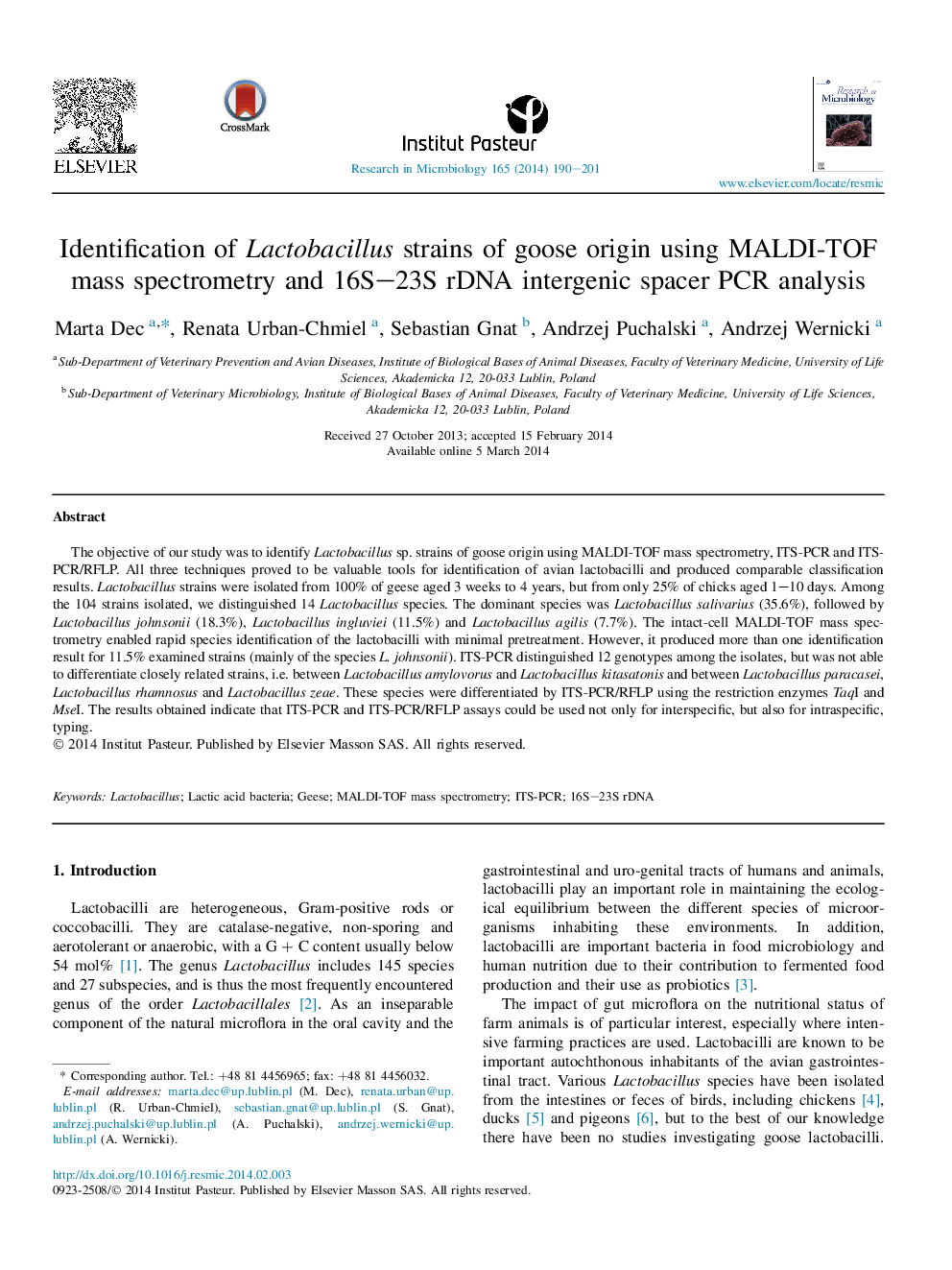| Article ID | Journal | Published Year | Pages | File Type |
|---|---|---|---|---|
| 4358581 | Research in Microbiology | 2014 | 12 Pages |
The objective of our study was to identify Lactobacillus sp. strains of goose origin using MALDI-TOF mass spectrometry, ITS-PCR and ITS-PCR/RFLP. All three techniques proved to be valuable tools for identification of avian lactobacilli and produced comparable classification results. Lactobacillus strains were isolated from 100% of geese aged 3 weeks to 4 years, but from only 25% of chicks aged 1–10 days. Among the 104 strains isolated, we distinguished 14 Lactobacillus species. The dominant species was Lactobacillus salivarius (35.6%), followed by Lactobacillus johnsonii (18.3%), Lactobacillus ingluviei (11.5%) and Lactobacillus agilis (7.7%). The intact-cell MALDI-TOF mass spectrometry enabled rapid species identification of the lactobacilli with minimal pretreatment. However, it produced more than one identification result for 11.5% examined strains (mainly of the species L. johnsonii). ITS-PCR distinguished 12 genotypes among the isolates, but was not able to differentiate closely related strains, i.e. between Lactobacillus amylovorus and Lactobacillus kitasatonis and between Lactobacillus paracasei, Lactobacillus rhamnosus and Lactobacillus zeae. These species were differentiated by ITS-PCR/RFLP using the restriction enzymes TaqI and MseI. The results obtained indicate that ITS-PCR and ITS-PCR/RFLP assays could be used not only for interspecific, but also for intraspecific, typing.
